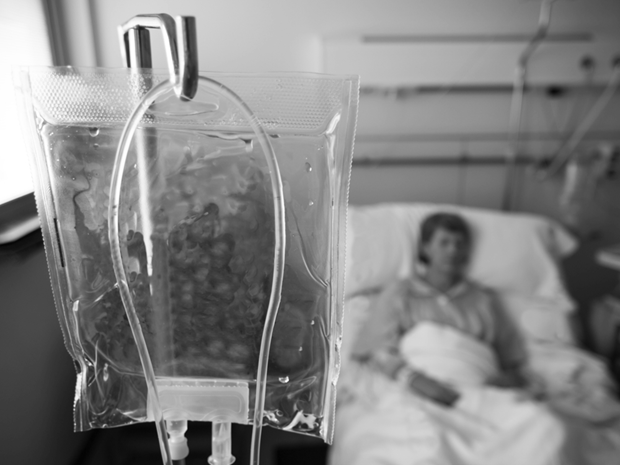A nurse is caring for a client who is receiving continuous bladder irrigation following a transurethral resection of the prostate.
The client reports bladder spasms and the nurse observes decreased urinary output.
Which of the following actions should the nurse take?
Remove the indwelling urinary catheter.
Decrease traction on the catheter.
Administer ibuprofen 400 mg for pain relief.
Flush the catheter manually with 0.9% sodium chloride.
The Correct Answer is D
“Flush the catheter manually with 0.9% sodium chloride.” The client is receiving continuous bladder irrigation following a transurethral resection of the prostate and reports bladder spasms and decreased urinary output.
These symptoms may indicate that the catheter is blocked with blood clots.
Flushing the catheter manually with 0.9% sodium chloride can help to remove any blood clots and restore urinary output.
Choice A is not the correct answer because removing the indwelling urinary catheter would not address the underlying issue of blood clots blocking the catheter.
Choice B is not the correct answer because decreasing traction on the catheter would not address the underlying issue of blood clots blocking the catheter.
Choice C is not the correct answer because while ibuprofen may provide some pain relief, it would not address the underlying issue of blood clots blocking the catheter.
Nursing Test Bank
Naxlex Comprehensive Predictor Exams
Related Questions
Correct Answer is A
Explanation

Administering IV fluids can help maintain blood flow to the kidneys and prevent acute kidney failure.
Choice B is incorrect because inserting a urinary catheter does not prevent acute kidney failure.
Choice C is incorrect because an intravenous pyelogram is a diagnostic test and does not prevent acute kidney failure.
Choice D is incorrect because beta-blocker therapy is not used to prevent acute kidney failure.
Correct Answer is C
Explanation
“Weight loss of.8 kg (4 Ib) in the past 24 hr.” Furosemide is a diuretic that decreases the pressure caused by excess fluid in the heart and lungs.
A weight loss of.8 kg (4 Ib) in the past 24 hr indicates that excess fluid is being removed from the body, which is a sign that the medication is effective.
Choice A is incorrect because adventitious breath sounds are a symptom of pulmonary edema, not an indication that the medication is effective.
Choice B is incorrect because furosemide has direct vasodilatory outcomes 2, which would decrease blood pressure, not elevate it.
Choice D is incorrect because there is no information found to support this statement.
Whether you are a student looking to ace your exams or a practicing nurse seeking to enhance your expertise , our nursing education contents will empower you with the confidence and competence to make a difference in the lives of patients and become a respected leader in the healthcare field.
Visit Naxlex, invest in your future and unlock endless possibilities with our unparalleled nursing education contents today
Report Wrong Answer on the Current Question
Do you disagree with the answer? If yes, what is your expected answer? Explain.
Kindly be descriptive with the issue you are facing.
